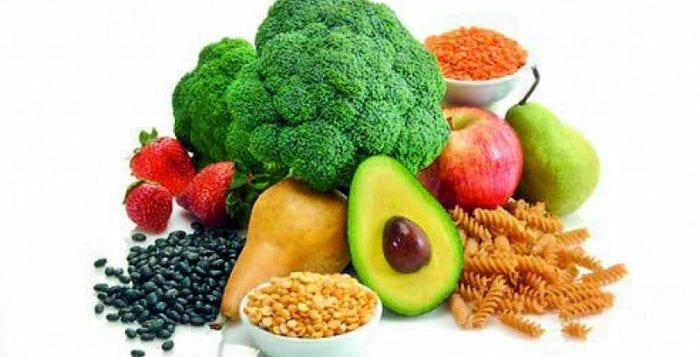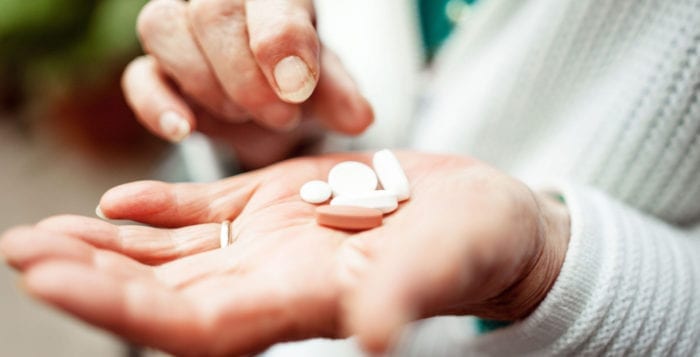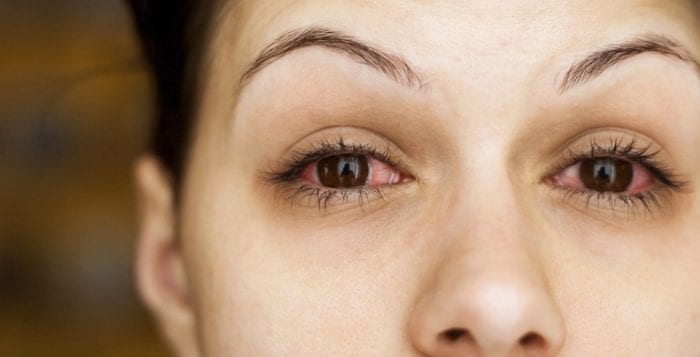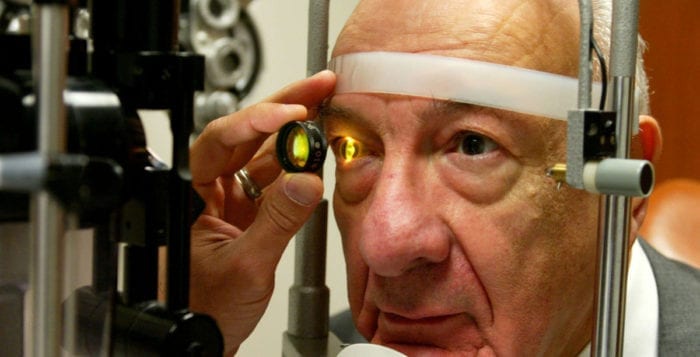By David Dunaief, M.D.

After winter ends, we look forward to mild temperatures. The days get longer, trees and flowers bud and bloom, and grass becomes lush and green. It seems like heaven. But for people who suffer from seasonal allergic rhinitis, hay fever, seasonal allergies or whatever you would like to call it, life can be downright miserable. You probably can rate an allergy season with your own built-in personal barometer, the sneeze factor. How many times are you, your friends or your colleagues sneezing?
Approximately 20 million U.S. adults have had a diagnosis of seasonal allergies within the past year, just a little over 8 percent of the population, and an additional 6.1 million children have this disorder, or about 8.4 percent, according to the Centers for Disease Control and Prevention (1). Sadly, considering the number of people it affects, only a paltry amount of research has been published.
The triggers for seasonal allergies are diverse. They include pollen from leafy trees and shrubs, lush grass and beautiful flowering plants, as well as weeds, with the majority from ragweed (mostly in the fall) and fungus (summer and fall) (2).
What sparks allergies within the body? A chain reaction occurs in seasonal allergy sufferers. When foreign substances such as allergens (pollen, in this case) interact with immunoglobulin E (IgE), antibodies that are part of our immune system, it causes mast cells in the body’s tissues to degrade and release inflammatory mediators. These include histamines, leukotrienes and eosinophils in those who are susceptible. In other words, it is an allergic inflammatory response.
The revved up immune system then responds with sneezing; red, itchy and watery eyes; scratchy throat; congestion; sinus headaches; postnasal drip; runny nose; diminished taste and smell; and even coughing (3). Basically, it emulates a cold, but without the virus. If symptoms last more than 10 days and are recurrent, then it is more than likely you have allergies.
Risk factors for seasonal allergies are tied most strongly to family history and to having other personal allergies, such as eczema or food allergies, but also may include cigarette exposure, being male and, possibly, diet (4). If allergic rhinitis is not properly treated, complications such as ear infections, sinusitis, irritated throat, insomnia, chronic fatigue, headaches and even asthma can result (5).
To treat allergic rhinitis, we have a host of medications from classes including intranasal glucocorticoids (steroids), oral antihistamines, allergy shots, decongestants, antihistamine and decongestant eye drops and leukotriene modifiers (second-line only).
The best way to treat allergy attacks is to prevent them, but this is an arduous process that can mean closing yourself out from the enjoyment of spring by literally closing the windows, using the air-conditioning, and using recycling vents in your car.
The guidelines for treating seasonal allergic rhinitis with medications suggest that intranasal corticosteroids (steroids) should be used when quality of life is affected. If there is itchiness and sneezing, then second-generation oral antihistamines may be appropriate (6). Two well-known inhaled steroids that do not require a prescription are Nasocort (triamcinolone) and Flonase (fluticasone propionate). There does not seem to be a significant difference between them (7). While inhaled steroids are probably most effective in treating and preventing symptoms, they need to be used every day and are not without side effects.
Oral antihistamines, on the other hand, can be taken on an as-needed basis. Second-generation antihistamines include loratadine (Claritin), cetirizine (Zyrtec) and fexofenadine (Allegra), and they have less sleepiness as a side effect than first-generation antihistamines.
Surprisingly good news
Seasonal allergic rhinitis may actually be beneficial for longevity. In a study involving more than 200,000 participants, results showed that those who had allergies had a 25 percent reduction in the risk of heart attacks, a 19 percent reduction in strokes, and a whopping 49 percent reduction in mortality (8). Remember two things: this is an observational trial, which means that it is not the best of trials, and don’t wish allergies on yourself. This effect may be at least partially attributable to the type of white blood cell expressed in the immune system.
In other words, type 2 T helper (Th2) lymphocytes (white blood cells) are elevated with allergies instead of type 1 T helper (Th1) lymphocytes. Why is this important? Th2 is known to decrease cardiovascular disease, while Th1 is known to possibly increase cardiovascular disease. Unfortunately, the same cannot be said about asthma, where cardiovascular events are increased by 36 percent.
Alternative treatments
Butterbur (Petasites hybridus), an herb, may not be just for migraines. There are several small studies that indicate its efficacy in treating hay fever. In fact, in one study, results showed that butterbur was as effective as cetirizine (Zyrtec) in treating this disorder (9). This was a small, randomized, controlled trial involving 131 patients.
In another randomized, controlled trial, results showed that high doses of butterbur — 1 tablet given three times a day — was significantly more effective than placebo (10). The side effects were similar in the placebo group and the butterbur group. The researchers used butterbur Ze339 (carbon dioxide extract from the leaves of Petasites hybridus L., 8 mg petasines per tablet) in the trial. The authors concluded that butterbur would be potentially useful for intermittent allergic rhinitis. The duration of treatment for this study was two weeks.
Still another study, this one a post-marketing study done as a follow-up to the previous study, showed that with butterbur Ze339, symptoms improved in 90 percent of patients with allergic rhinitis (11). Interestingly, anti-allergic medications were co-administered in about half of the patient population, with no additional benefit over butterbur alone. There were 580 patients in this study, and the duration was two weeks. Gastrointestinal upset occurred as the most common side effect in 3.8 percent of the population.
The caveats to the use of butterbur are several. First, the studies were short in duration. Second, the leaf extract used in these studies was free of pyrrolizidine alkaloids (PAs); this is very important since PAs may not be safe. Third, the dose was well-measured, which may not be the case with over-the-counter extracts. Fourth, you need to ask about interactions with your prescription medications.
Diet
While there are no significant studies on diet, there is one review of literature that suggests that a plant-based diet may reduce symptoms of allergies, specifically rhinoconjunctivitis, affecting the nose and eyes, as well as eczema and asthma. This is according to the International Study of Asthma and Allergies in Childhood study in 13- to 14-year-old teens (12). In my clinical practice, I have seen patients who suffer from seasonal allergies improve and even reverse the course of allergies over time with a vegetable-rich, plant-based diet, possibly due to an anti-inflammatory effect.
While allergies can be miserable, there are a significant number of over-the-counter and prescription options to help to reduce symptoms. Diet may play a role in the disease process by reducing inflammation, though there are no formal studies. There does seem to be promise with some herbs, especially butterbur. However, alternative supplements and herbs lack large, randomized clinical trials with long durations. Always consult your doctor before starting any supplements, herbs or over-the-counter medications.
References: (1) CDC.gov. (2) acaai.org/allergies/types/pollen-allergy. (3) Allergy Clin Immunol. 2003;112(6):1021-1031. (4) umm.edu. (5) J Allergy Clin Immunol. 2010;125(1):16-29. (6) Otolaryngol Head Neck Surg. online February 2, 2015. (7) Otolaryngol Head Neck Surg. 2003;129(1):16. (8) AAAAI 2014: Abstract 811. (9) BMJ 2002;324:144. (10) Arch Otolaryngol Head Neck Surg. 2004;130(12):1381-1386. (11) Adv Ther. 2006;23(2):373-384. (12) Eur Respir J. 2001;17(3):436-443.
Dr. Dunaief is a speaker, author and local lifestyle medicine physician focusing on the integration of medicine, nutrition, fitness and stress management. For further information, visit www.medicalcompassmd.com or consult your personal physician.
























